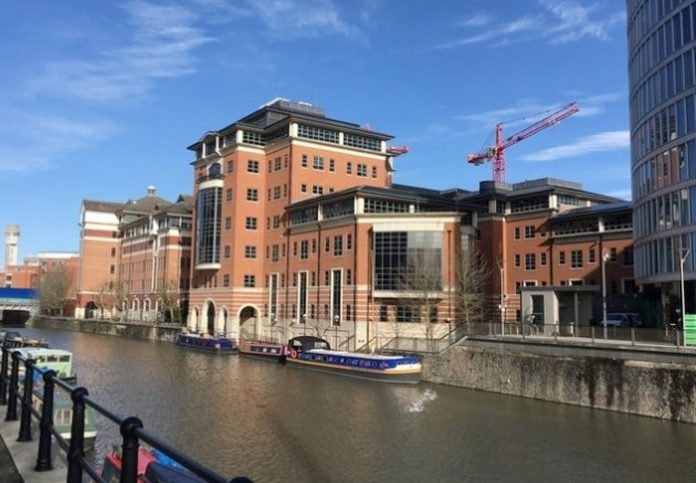Morton Property Consultants has released its latest overview of the Bristol office market:
The London office market may be struggling, with headline rents cut and many occupiers reducing their footprint or leaving “grey space” empty; but Bristol (with a minimal overhang of empty space) continues to demonstrate its resilience.
Letting figures for 2020 were down, but not massively so, from those for 2019; headline rents for both Grade A and B space have held steady, although incentives have increased; and a new 200,000 sq ft speculative scheme is one of two that has started on site.
Beneath the headlines, some interesting trends are emerging which will impact the market longer term, not least the growth of flexible working leading to reduced space requirements; but there is no indication of stress through oversupply or reduced incomes for landlords.
Take up figures and headline deals
After a strong first quarter, there was an inevitable lull for the second two quarters as the pandemic made itself felt; that was followed by a robust Q4, bringing the total figures far closer to long-term averages.
The city centre saw a total of 506,293 sq ft transacted, compared with the above average 693,909 sq ft in 2019.
The year’s biggest city centre deal remained the Q1 letting of 73,991 sq ft to Osborne Clarke. However, Q4 saw the second biggest (37,828 sq ft to DAS at 2 Trinity Quay) along with the third largest (35,291 sq ft to Jacobs UK at One Glass Wharf) and the fourth, with Orega taking 22,734 sq ft at 33 Bristol. AHMM Architects took a prelet (8,567 sq ft) on One Portwall Square setting a new bench market grade A rent of £38.00 psf pa. Headline second-hand space remained stable at £25.00 – £34.00 psf pa although incentives pushed out to circa 12 months for a 5 year lease.
A slightly different picture emerged Out of Town: a total of 258,200 sq ft was let, of which just over half was accounted for in Q3 by Babcock at 100 Bristol Business Park. This figure was marginally up on 2020, which saw 244,695 sq ft transacted, but below the 10-year average.
Expectations in March were for more city centre businesses to relocate to North Bristol – attracted by lower rents, the ability to drive to work and a less crowded environment. We haven’t seen that. We had also been expecting relocations from London occupiers seeking to reduce costs and meet demand from employees for reduced commuting times.
Again, that has not materialised, but there is every indication that this shift has been put on hold by Covid rather than shelved.
Many companies – including those already here as well as many corporates in London – are undertaking strategic cost planning, and we’re expecting that to result in more businesses, having done their sums, to rethink their requirements. The Government is continuing its review of relocating 22,000 staff out of London to the regions by 2030, the results of which are due in Q4 2021.
New beginnings
With existing Grade A space down to around 100,000 sq ft, developers have pressed the button on several new schemes.
Construction has started on Building C, Assembly, offering 88,000 sq ft of speculative space, behind the new BT Building, off Bond Street. Developers AXA/Bellhammer are offering 7,700 sq ft floor plates and a direct link to the station via newly constructed boardwalk along the Floating Harbour.
Nord’s One Portwall Square scheme will release 33,750 sq ft over six floors of BREEAM excellent space into the market late 2021 whilst CEG’s former Aspire building (now rebadged “EQ”) is the major scheme on the horizon, delivering 200,000 sq ft of mixture workspaces in late 2022.
Tristan Capital/Candour’s Welcome Building, formerly 4 Glass Wharf, is due to start on site Q2/3 2021, providing a further 206,000 sq ft with significant floor plates of circa 30,000 sq ft.
With the flight to quality becoming an established post-Covid phenomenon there are also various buildings, having undergone or undergoing comprehensive refurbishments, which will bring good quality, flexible space with a high provision of “wellness” forward in 2021. These include; 33 Bristol (45,757 sq ft), Pivot + Mark (30,870 sq ft), One The Square (12,855 sq ft) and Linear Park (16,636 sq ft).
Covid and the future of flexible working
Recent years have seen a steady increase in “agile working”, with many companies steadily reducing the amount of space allocated per employee – typically down from 100 sq ft per employee to 80 sq ft. This year has been important in demonstrating to those remaining employers unsure about embracing flexible working that it can be done technically, and that productivity does not necessarily suffer.
Its additional benefits include being able to tap into a larger talent base, including those who find it difficult to commute daily – eg those with children to get to and from school – or people living with a disability.
This has led to many companies looking long term at their space requirements, and there is every indication that employers will be seeking to reduce their allocation down by 10 – 25% overall to reflect less desks and more social, focused, informal and formal collaborative and creative meeting areas. The ability to relocate or reconfigure the existing workspace to reflect the increase in individual remote working (WFH) and wellbeing, in conjunction with the need to maintain creativity, corporate culture, mentoring, training and values will be amongst the key drivers for any Board looking to get ahead of their competition.
But there are caveats.
What the latter lockdowns in particular have demonstrated is that flexible working does not suit every individual, demographic or business. Many find it problematic or even stressful to miss out on the social interaction of work; not everyone’s home is suitable for home working.
Those businesses with a predominately younger workforce, for instance, will need to accommodate staff in the office for more hours than, say, a firm with significantly more senior staff who don’t need so much face to face time with their colleagues or their network. Moreover, they are invariably living in larger houses with plenty of space to work – unlike their juniors who often live in shared accommodation competing for the internet.
Then there is the whole issue of sustaining company culture, mentoring younger personnel and onboarding new staff. Progressing staff within a business is usually achieved by learning through osmosis: you don’t get that if you’re not sitting next to someone. You also learn what’s going on in the business or in the market far more readily in an office environment.
So, yes, people can work from home and quite possibly are more productive. But is it beneficial for the business? In the third lockdown, some businesses are starting to see their culture eroding. That makes strategic thinking vital for companies – to match their space needs precisely in order to optimise costs, sustain morale and maintain productivity.
What might the future look like?
A clear trend is forming where occupiers are looking at properties which are contractually and physically flexible, as well as offering a high degree of “wellness” for their staff.
Obviously lease flexibility is less popular with funds, but a number are starting to see this as (part of) the way forward; and, of course there are co-working operators happy to offer monthly terms. It will take time but the market will become more flexible.
One Redcliff Street is a classic example. It is now fully occupied for the first time in many years because having been one of the first to undergo a major modernisation. It provides flexible floorplates and lease terms together with a managed service environment and amenities such as high quality shower and changing facilities, as well as an extensive fully glazed spacious atrium entrance/informal meeting area.
We see more landlords in the future allowing tenants to have multiple leases across the space occupied, allowing them to readily assign or sublet one of the leases should their needs change.
“Core and flex” will be the order of the day for many. Post pandemic core space will likely be less than it is now, probably 40 – 50% of a company’s total holding, and the rest will fluctuate depending on their shorter-term requirements. CEG’s EQ, for instance, includes a floor of dedicated co-working accommodation enabling tenants to take less space elsewhere in the building.
Less space, higher quality
Along with the trend of less space per employee will be a drive for a higher quality working environment, helping to attract and retain talent. On the back of that, we expect a lot of the older Grade C buildings will go for alternative uses, as did the grade D in 2008/9.
Greater flexibility, higher quality is where the Bristol office market is heading.
2021?
There is what can best be described as “cautious confidence” in the market, with hopes that the vaccine will enable a return to the “new normal” by the autumn.
Q1 will be slow, and quite possibly Q2 too, but the second half of the year should be far more positive, not least because we should start seeing some of the fruits of the strategic planning now taking place.




















